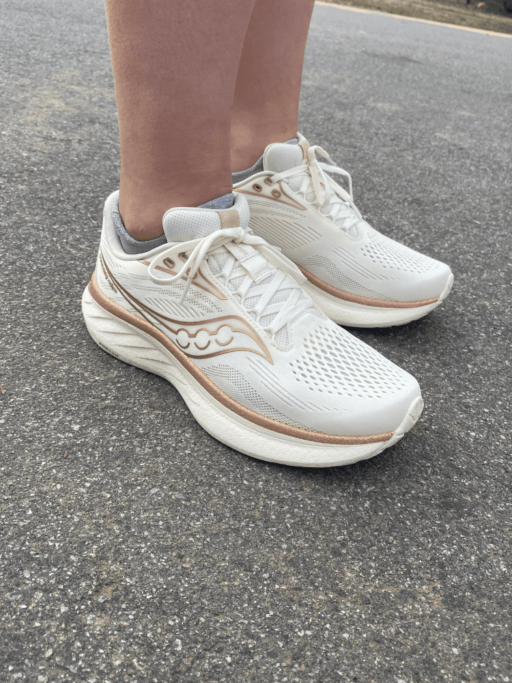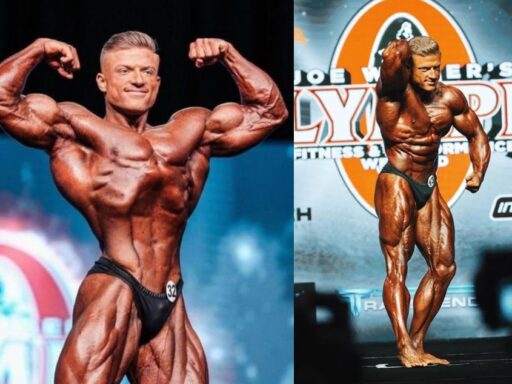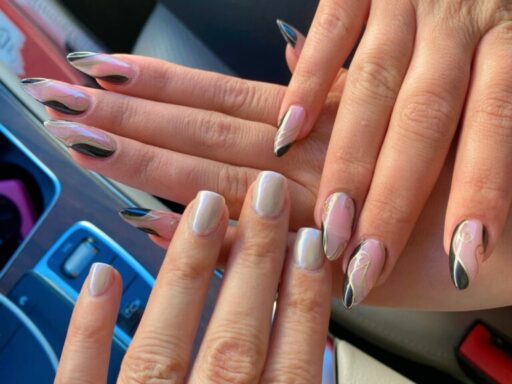Taking a pair of running shoes out on a long run is like taking the next step in a relationship—if you’re going to be out running for a few hours, you want a pair that you can trust, that makes you feel good, and that you can have fun with. (Plus anything that bugs you about a shoe during a three-mile run is really going to hurt on a thirteen-mile run.)
Whether you’re training for a marathon, going on all-day trail adventures, or just logging double digits for fun, the right shoe can make your workout fly by faster (and help those later miles feel less grueling). You also want your sneakers to protect your feet from all the impact that comes from high-mileage days, without weighing you down.
Basically, your shoes can make or break most long runs. But no pressure—we’ve got you. We spoke to podiatrists, physical therapists, and running coaches to get their top picks for long distances and tried their recommendations out for ourselves—shop the winners below.
Our top picks
In this article
What to consider when shopping for running shoes for long distances
The longer you’re going to be running in a shoe, the more crucial it is that it fits comfortably. “It’s got to feel good,” Howard E. Friedman, DPM, a podiatrist at Suffern Podiatry and an avid runner, tells SELF. “It’s got to work for your gait and foot type.”
The best way to make sure your running shoe fits correctly is to head to your local specialty running store for a fitting, Mark Mendeszoon, DPM, a podiatrist at Precision Orthopaedic Specialties in Ohio who owns two running shoe stores, tells SELF. Those expert fitters can measure the height of your arch to determine how much support you need and do a gait test to see if you overpronate (meaning your feet and ankles roll inward with each step).
They’ll also help you find the right size. Dr. Friedman says most people will want to size up at least half a size from their everyday shoes, since your feet will probably swell while you run. And make sure you love the fit before you commit to it: “You shouldn’t have to break in your shoes,” Laura Filla, a certified running coach and personal trainer, tells SELF. “If there’s anything that feels weird about it, that’s not the shoe to pick.”
Longer runs can take more of a toll on your body, so you need your shoes to offer some extra protection and shock absorption, Cathlin Fitzgerald, PT, DPT, CSCS, a physical therapist and certified running coach at New York Custom PT, tells SELF. Often, that protection comes in the form of cushion, but there are other options for those who don’t like huge stacks of foam, she says. (Like the Nike Pegasus 41, which has springy air pockets in the forefoot and heel, along with a moderate stack of cushioning.)
“Most of our customers are leaning more toward max-cushion shoes for those longer runs,” Jess Lyons-Quirk, director of Footwear Merchandising at Road Runner Sports, tells SELF. “It’s a little easier on the joints, it makes the run feel a bit smoother, and a lot of those max-cushion shoes have very premium elements that make the experience better if you’re running a long distance.”
That said, you don’t want all that cushion to make you feel unstable as your legs start to tire out, James McCormack, a physical therapist and running shoe expert based in France, tells SELF. Shoes with a broad base of support, like the Hoka Clifton 9, can offer stability alongside all that comfy padding.
Lots of foam is great—just make sure it doesn’t weigh you down too much. Shoes on the heavy side (anywhere close to 10 ounces or more), won’t be ideal when you’re losing steam at the end of high-mileage excursions.
“The heavier the shoe is, the more energy will be required to swing your leg,” Dr. Friedman says. “Wear the lightest shoe you’re comfortable in.”
Shop the best shoes for running long distances
These picks from SELF editors and experts are ready to cushion the ride.
Best Overall: Saucony Ride 18
Pros
- Soft and responsive yet stable foam
- Comfortable, breathable upper
- Versatile
Cons
- May feel too soft for some runners
On long runs, comfort is king, and I’ve found few shoes more comfortable than the Saucony Ride 18. They’re not exactly a max-cushion shoe, but they get the job done—the insole strikes the perfect balance of feeling soft and responsive, so they feel great on easier runs but are still springy when you want to pick up the pace.
Everything else about the shoe, from the mesh upper to the gusseted tongue, screams “comfy,” which is why I’ve found myself reaching for the Ride 18s (and their predecessor, the Ride 17s) for my long runs for years now.
Don’t just take my word for it: They’re also Dr. Friedman’s go-to long run shoes (he’s finished several half marathons in them), and Filla says they’re one of the most popular shoes among her athletes for long runs. Lyons-Quirk agrees: “They’re super cushioned and soft—it’s a very cushy foam, and it feels super supportive on that long run,” she says.
Original photo by SELF writer Lauren Wingenroth
Sizes: US 5 to 12 | Materials: Mesh, foam, rubber | Widths: Regular, wide | Weight: 8 oz
Best for Beginners: Hoka Clifton 9
Pros
- Cushioned but stable
- Comfortable, locked-in fit
- Subtle rocker sole
Cons
- Some Hoka reviewers reported issues with the outsole’s durability
Beginner runners who are just starting to increase their mileage, look no further. The Hoka Clifton 9 has both a generous stack of cushioning and a highly stable design, which makes it one of McCormack’s top picks for those new to long-distance runs.
While the Clifton isn’t a stability shoe (meaning it isn’t supposed to correct overpronation), McCormack says its wide base and the subtle rocker sole (which helps propel your foot forward with each step) put it into the “stable, but neutral” category—Dr. Mendeszoon even calls it the “gold standard.”
Original photo by SELF writer Lauren Wingenroth
Sizes: US 5 to 12 | Materials: Mesh, foam, rubber | Widths: Regular, wide | Weight: 7.3 oz
Best for Easy Long Runs: Asics Novablast 5
Pros
- Soft, luxurious foam midsole
- Feels light and bouncy
- Comfortable, breathable upper
Cons
- May feel too squishy for some runners
Just because you’re running at a slower, more relaxed pace doesn’t mean you want to feel like you’re slogging along. That’s where the Asics Novablast 5 comes in: It's a fun, bouncy, soft-yet-responsive trainer that helps those miles feel truly easy.
McCormack agrees, and says the shoe’s springy forefoot is what helps make those transitions feel so smooth and effortless. (A bonus if you decide to pick up the pace, or are looking for a shoe that handles both long, slow runs and, say, a handful of tempo miles well.)
Dr. Mendeszoon also recommends the Novablast to runners who like that soft, almost-squishy feeling, and adds that it’s durable enough to take on double-digit miles, if that's what's on your docket.
Original photo by SELF writer Lauren Wingenroth
Sizes: US 5 to 12 | Materials: Jacquard mesh, foam, rubber | Widths: Regular, wide | Weight: 7.9 oz
Best for Long Workouts: Saucony Endorphin Speed 4
Pros
- Lightweight
- Propulsive but flexible nylon plate
- Soft, bouncy foam midsole
- Comfortable, breathable upper
Cons
- Pricey
- Only comes in one width
For some runners, logging lots of miles is enough of a challenge in itself. But others might want to level up their long run by making it a workout, whether that includes some tempo miles in the middle; a few fartleks; or a strong, fast finish. Those kinds of runs—which you’ll often find on intermediate or advanced marathon and half-marathon training plans—demand a shoe that's lightweight, well-cushioned, and offers both propulsion and protection.
McCormack says the Saucony Endorphin Speed 4 checks all those boxes. Another “super trainer,” it has a nylon plate that's less rigid and less aggressive than carbon, but still adds plenty of propulsion, for a springy, fast ride.
Fitzgerald is also a fan of the Endorphin Speed line, especially for runners who’ve never tried a super shoe before, since the nylon plate can be easier to get used to than a traditional carbon fiber one. (She also says this means you'll get more use out of the shoe without worrying about getting an injury from an aggressive carbon plate.)
An earlier version of the shoe won a Sneaker Award in 2021—and personally, it’s one of my all-time favorites for long runs that seem daunting at first, until I lace them up.
Original photo by SELF writer Lauren Wingenroth
Sizes: US 5 to 12 | Materials: Mesh, foam, nylon, rubber | Widths: Medium | Weight: 7.2 oz
Most Versatile: Nike Pegasus 41
Pros
- Air Zoom units provide extra shock absorption
- Versatile enough for all kinds of runs
- Comfortable, breathable upper
Cons
- May not be cushioned enough for some runners
Source link









